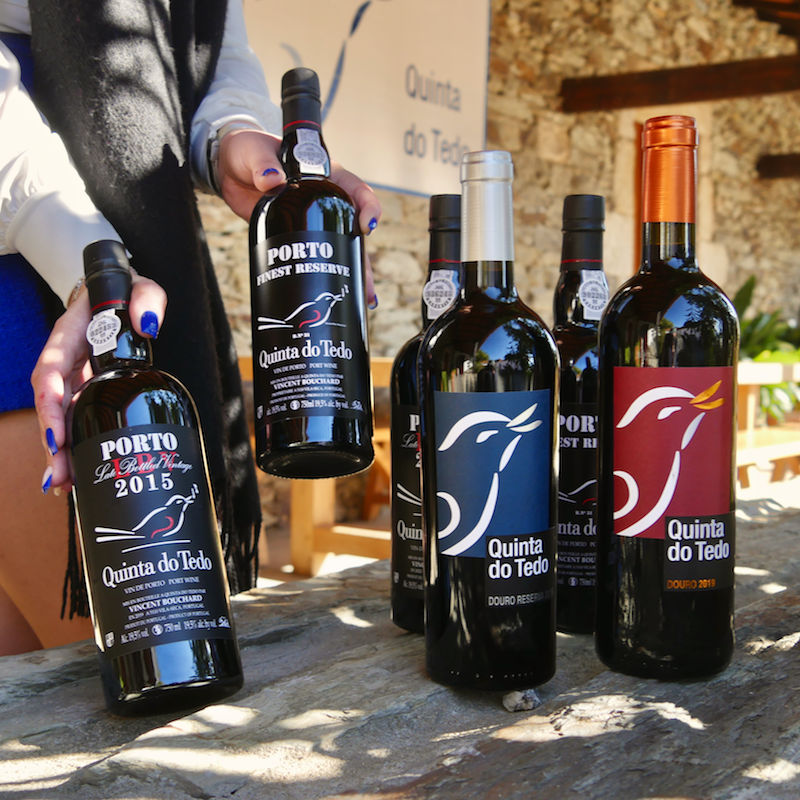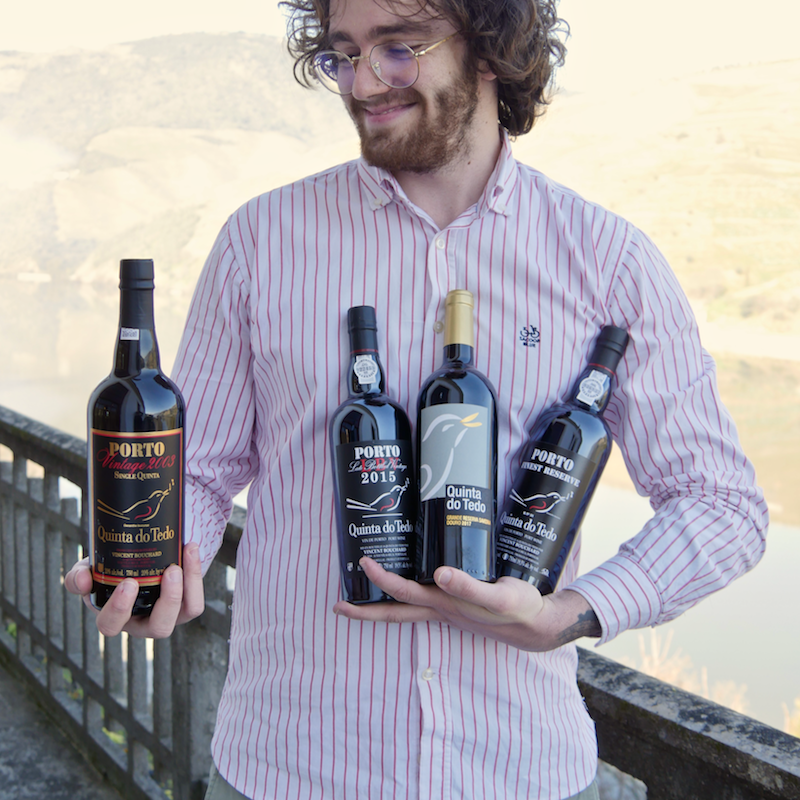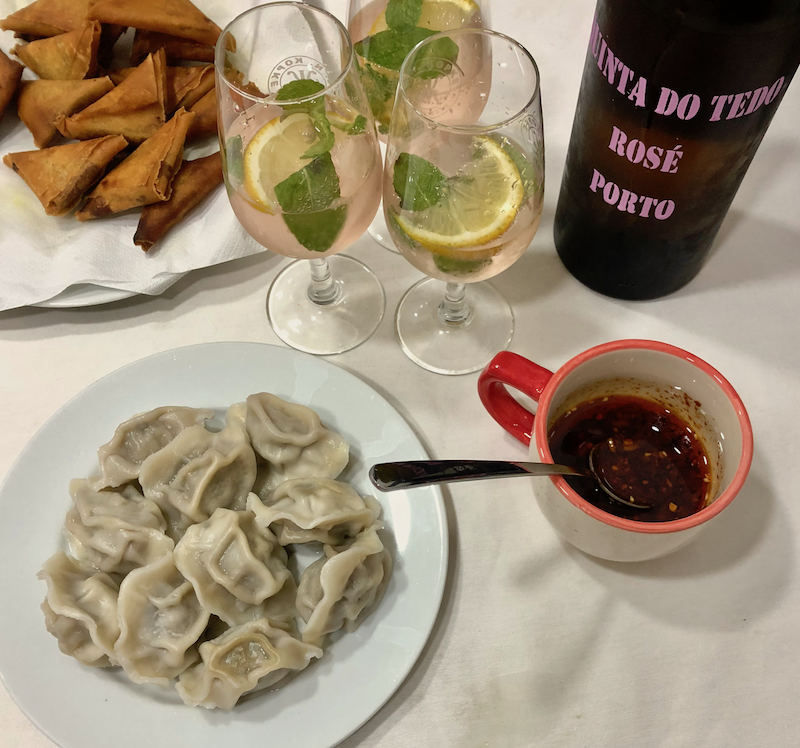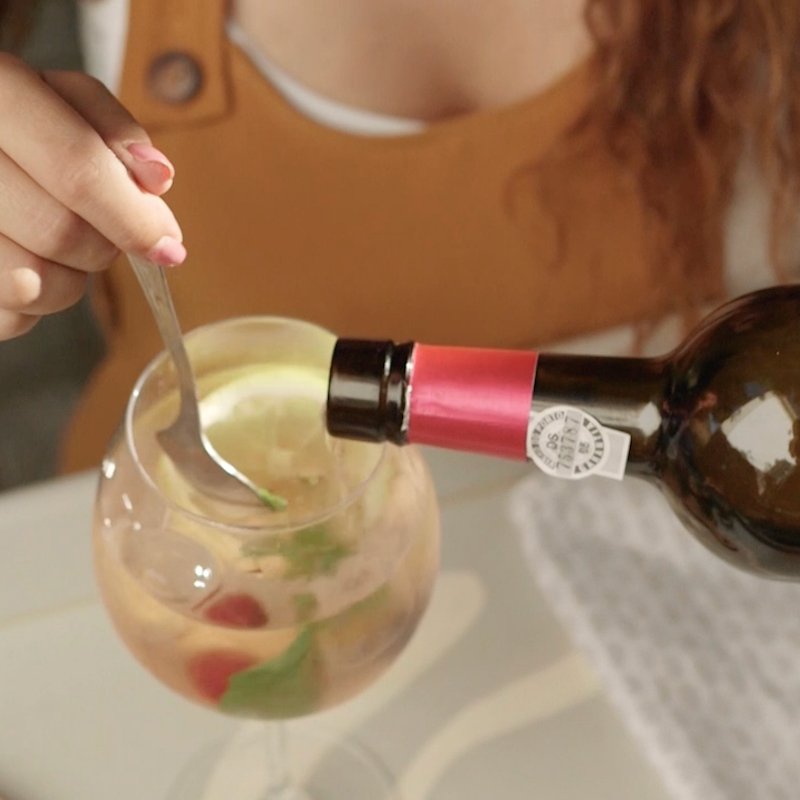Last month, we went over the basics in Part 1 of our 2-part Port 101 blog series - what is Port, why is it special, and what makes the Ports we produce at Quinta do Tedo so unique product.
In this month’s Part 2, we’ll dive into the details behind each of our Quinta do Tedo Ports - how they are produced and how this dictates their style.
For the record, while we also love white Port, we do not grow white grapes at our low 60-180 m elevation estate in Cima Corgo, Douro’s historic cradle for quality red grape production, so we’ll focus here on the Red and Rosé Ports styles we produce at Quinta do Tedo.
Rubies, because not every day is a Vintage day.
Quinta do Tedo Ruby-style Ports are blends of 3 different harvests aged in large (4,000-7,000 L) neutral French oak vats for a “short” time (max 6 years). This “reductive” style of aging in minimum contact with oxygen for less time preserves the Port’s youthful and dark “Ruby” color and structure, and hones its fresh fruit and spice aromas which become more complex and take on elegant tea and tobacco nuances the older the blend.
Ruby
A blend of 3 harvests aged 4-5 years (that’s older than most larger Port producers' entry-level Rubies, which can be made with Ports as young as 2 years!)
6,000 bottles per year
Awarded Gold (Sélections Mondiales des Vins Canada), Silver & 91 points (Decanter World Wine Awards) and Silver (SF International Wine Competition)
Finest Reserve Ruby
Informally known as the "poor (wo)man's Vintage" or “Ruby’s older brother”
A blend of 3 or more Vintage-quality harvests from older vines and aged an average 6 years
7,000 bottles per year
Awarded Gold (Sélections Mondiales des Vins Canada), Silver & 92 points (Decanter World Wine Awards) and Silver (SF International Wine Competition)
Tawnies, also known as “the Queen of Ports”, are sure to please aficionados/as of older amber-colored elixirs.
Quinta do Tedo Tawny-style Ports are blends of 3 harvests aged in small (250-600 L) neutral French oak barrels for a “long” time (min 6 years). This “oxidative” style of aging increases evaporation (thus concentrating sugar, acidity and alcohol), precipitates color (hence the lighter “Tawny” hue), and imbues the Port with velvety caramel, baking spice, nut and dried white fruit and citrus peel aromas that become more complex the older the blend. Oxidative aging also buffers Tawny Ports from oxygen shock, so you can enjoy a glass a day for up to 3-4 weeks after opening without losing freshness.
Fine Tawny
A blend of 3 harvests aged an average 8 years ("Fine”, like “Reserve”, indicating this is a step up from an entry-level “Tawny” which can be made with Ports as young as 4-5 years!)
14,000 bottles per year
Awarded Silver (International Wine Challenge) and Silver (SF International Wine Competition)
Tawny 10 Years
A blend of 3 or more harvests age an average 10 years
2,400 bottles per year
Awarded Gold & 95 points (Decanter World Wine Awards), 90 points (Robert Parker Wine Advocate), 90.4 Arribe de Oro & 97.2 Arribe de Oro Em Femenino (Prémios VinDuero VinDouro) and Silver (International Wine Challenge)
Tawny 20 Years
A blend of 3 or more harvests aged an average 20 years
1,100 bottles per year
Awarded 93 points (Robert Parker Wine Advocate)
Colheita, the “Vintage” of Tawny Ports.
Colheita Ports are similar to Tawny Ports in that they age for at least 7 years in small barrels but, rather than representing a “house style” blend of various harvests, Colheita Ports represent the unique expressin of single outstanding harvests.
Colheita 2005
Quinta do Tedo’s first (and currently only!) Colheita
2005, a dry year and a hot harvest full of expression, aged 15+ years before bottling in 2021
Very expressive, spicy and refined; semi-dried fruits (apricot, figs, pecans) and orange peel with a touch of curry; balanced acidity and sugar with well-integrated alcohol
800 bottles
Awarded 17/20 points (Paixão Pelo Vinho)
Vintage, also known as “the King of Ports” and produced only in the best years, is the most prestigious Port.
18+ grape varieties, dominated by Touriga Nacional and our estate's old field-blended parcels, come together in this unique, rich, concentrated and age-worthy expression of Douro’s best harvests.
Bottled within 18 months of harvest and without filtering, Vintage Ports can be enjoyed immediately, but promise greater evolution of flavor and complexity after 10-40+ years of bottle-aging (if you can stand the wait!)
Traditionally, Vintage Ports are produced only 3-4 times per decade. However, at Quinta do Tedo we strive to make Vintage Port every year, to build a library of the best fortified expression of our estate’s best fruit each year.
While we declared our first Quinta do Tedo Vintage Port in 1995, our most recent Vintages include:
Vintage 2019
2,400 bottles
2019, a cooler-than-average summer made for a fresher Vintage
Black and red fruits (blackberries, currants, cherries); forest shrub and wild rock rose; soft tannins and a pleasant bittersweet nuance
Awarded 94 points (Robert Parker Wine Advocate) and 18/20 points & Prémio de Excelência (Paixão Pelo Vinho)
Vintage 2017
4,000 bottles
2017, a classic, long-ripening harvest that yielded balanced concentration
Soft and generous black fruit (blueberries, plums, black cherries) and spices; elegant and complex with a persistent finish
Awarded 94-96 points (Robert Parker Wine Advocate), 96 points & Editor’s Choice (Wine Enthusiast) and 16.5/20 points (Bourgogne Aujourd'hui)
Vintage Savedra, “the King of Ports”, from Savedra, “the King of Quinta do Tedo’s vineyards”.
Only in the most exceptional years (also known as “classic Vintages”, when all Port houses produce Vintage Port) do 24+ grape varieties from Savedra (our old 60+ year field-blend with deep roots and low yields) come together in this rich, cool, complex and powerful Vintage.
As with any Vintage Port, our Vintage Savedra can be enjoyed immediately, but is best hidden away for 10-40+ years to grow more elegant and complex.
While we produced our first Quinta do Tedo Vintage Savedra Port in 2000, our most recent Vintage Savedras include:
Vintage Savedra 2018
1,200 bottles
2018, a classic Vintage thanks to a long, hot, dry summer
Dense black fruits (blackberries, prunes, black cherries) with clove, white pepper, wet shale and herbal freshness; great tension and precise tannins
Awarded 92+ points (Robert Parker Wine Advocate) and Silver & 93 points (Decanter World Wine Awards)
Late Bottled Vintage (or LBV), for those who cannot wait for a Vintage to “come of age”.
LBV Ports are only made from great single harvests (like Vintage Ports) and pre-aged in 500 L and 4,000 L neutral French oak barrels and vats for 4-6 years before bottling (hence "Late Bottled") for you to enjoy immediately.
At Quinta do Tedo we only lightly filter our LBVs to enable them continued evolution for 5-8 years in bottle, if you choose to cellar them.
While 1994 was the first LBV we produced at Quinta do Tedo, our most recent editions include:
LBV 2016
8,000 bottles
2016, with low yields and a slightly cooler profile
Black and red fruit (blackberry, blueberry, wild strawberry) tinged with cool mint and wet shale; fresh fruit and minerality; generous, with good weight and a long finish
Porto Rosé to break tradition with a bright, young, new Port on the block!
Wanting something fresh (especially during summer) and fun (ever tried a Porto cocktail?), in 2010 we bypassed foot treading with some of the Tinta Barroca and the other lighter grape varieties we grow ever-so-gently directly pressed them to extract a pale rose nectar which we partially fermented before fortifying and aging for only 3-4 months in stainless steel.
The result? A light and aromatic “smashing hit” best enjoyed chilled, by itself, or in a Port Tonic! Our unique Porto Rosé is, for many, a “gateway” into the rest of our more traditional PORTfolio.
Porto Rosé
7,000 bottles per year
Awarded 16.5/20 points (Paixão Pelo Vinho)
And there you have it, a lengthy albeit thorough, and hopefully eye-opening and mouth-watering, Port refresher to accompany your tastings, to share with others, and to inspire your continued Port education.
Bom proveite! - Odile Bouchard












